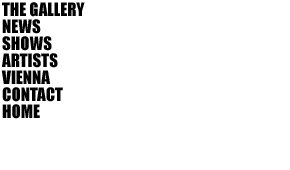
ART BASEL
21.6.2000 bis 26.6.2000
"EVIDENCE"
A barren place in a deserted nightly landscape. Buildings released from recombinations of collective memories, released from language, from verbal description like exhaust from an uncanny kind of machinery. Reconstructions of fictitious locations und images taken from the core of media fictions and accidental arrangements that inhabit the realm of constructed imaginations. No place to visit, in fact. The buildings appear to be reconstructions of utopian fantasies for which there is no exchange currency. The spell is broken in the very moment in which one gets to finally see an image of something which in first place originated within language, a mischievous promise of paradise, or a SNACK, HOT MEALS, and maybe a terrace, which has no view but turns into TERROR by a simple misreading of the word itself.
Evidence here is maybe only a proof for the fact that there exist collective memory reservoirs. Movie sets, locations and backdrops, pieces of scenery in a landscape which was not overtaken by sudden nightfall but which radiates an artificial darkness generated by the complete absence of light. This might be a set for a movie which will never be shot for there is no narration and no actors, but only the tale of an absence. Architecture itself becomes the lead and reflects a reality which originates in the transformation of stories into places, moments and gestures, and which is in the process of generating new fictions: a rendez-vous of forms of narrations written in syntax of collective fantasies. Images of structures of communication which have become part of a harddrive's memory are reconfigured into a different kind of grammar.
These visual reconstructions turn into mirror surfaces reflecting one another even through timelines and eyelevels that are constantly adrift. They mirror each other within the continuation of a narrative that at the same time is a recapitulation. On these models' surfaces transparent structures unfold thus once more providing visual forms which are then coated with language. Images, counter images and terms, the topolgy and topoi as well transform into screens and sensors which are oriented towards each other: threedimensional semantic surfaces.
The landscape maybe refers to a story by Kafka, "The Den". SNACK, the empty stand is derived from a 70ies french movie. The cabin next to it is a digital reconstruction of a shack near Lincoln, Montana, where Ted Kaczyinski lived who became known as the UNA Bomber. After he was sent to prison, the whole cabin was declared body of evidence. It was wrapped in blue plastic and taken away on a truck to a hangar owned by the FBI, where it was set up looking like an installation by some contemporarian artist.
Another building emerges from a different context. TERROR can be retraced, as if looking for evidence, to a photography by Julius Shulman from 1938 which shows a movie theater in Los Angeles which was called the TERRACE THEATER. A viewer who throws but a quick glance at the photo might read TERROR instead of TERRACE. Thus an error, a visual misspelling, becomes the reality of the digital image. Terrace transformed into Terror, a neon writing in the dark which promises fiction but redeems reality. The original film titles which had been on display have vanished: instead, reality is being announced. The trauma which one never forgets but cannot remember as well. A cabin, a shelter as symbol, asn incorporation of existential situations; projection surfaces of delirious states of mind. This work is about the borders of the civilised world, about the contour of matter and materials and in which way this contour becomes visible through various media formats.

